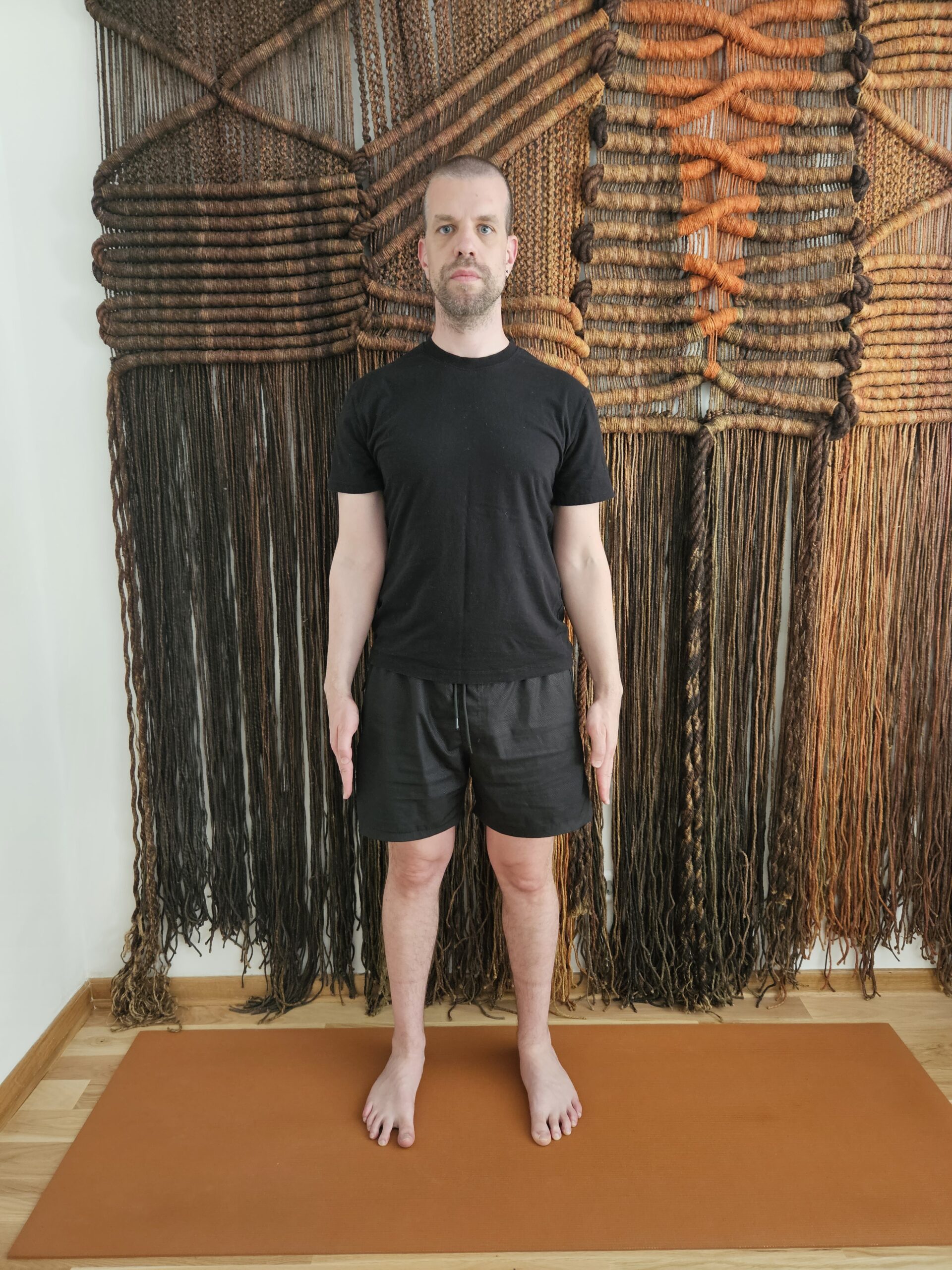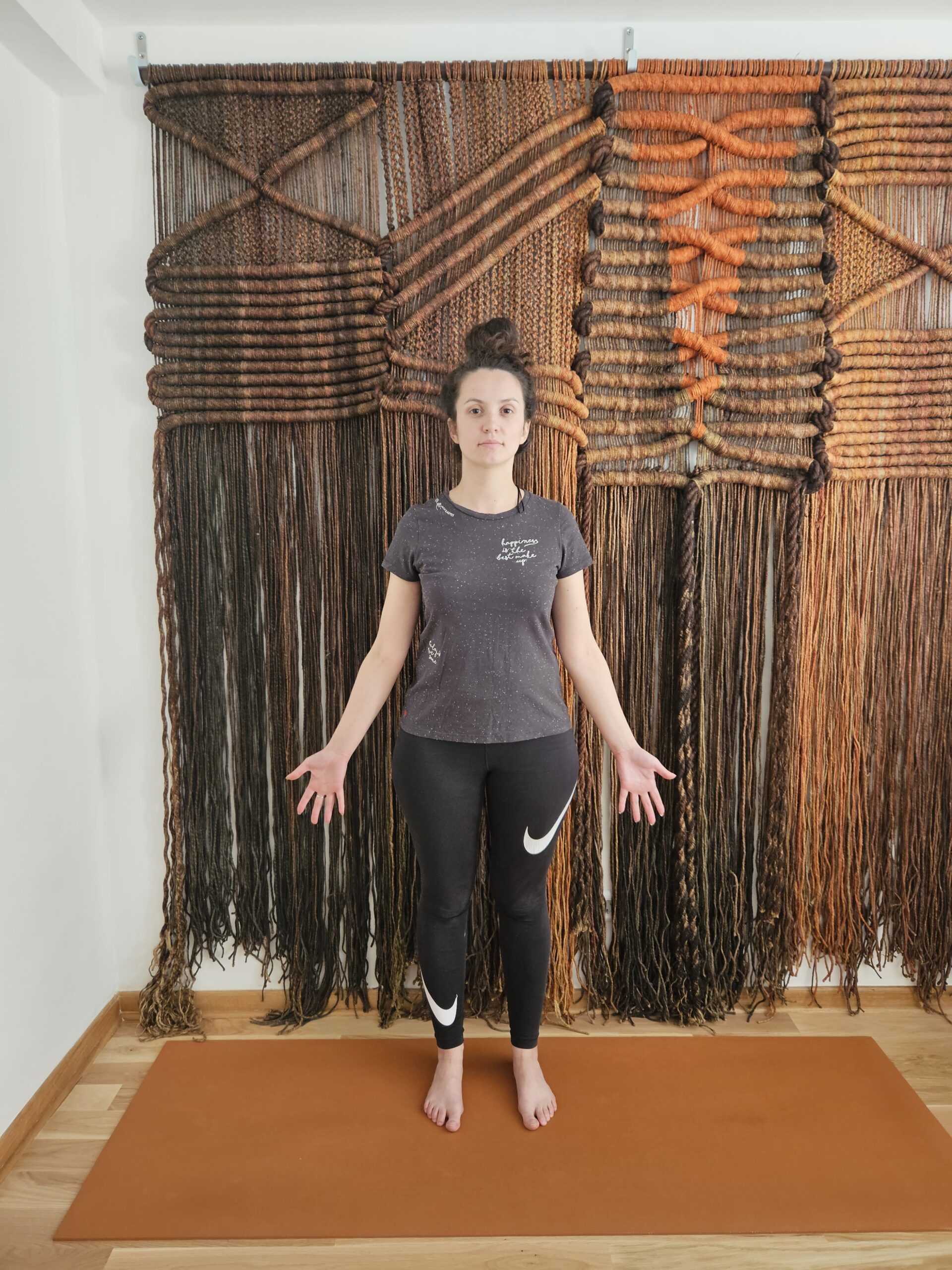Mountain Pose is a simple yet powerful yoga pose that can benefit both your body and mind. Regular practice can refine your posture and build a strong core and legs, turning you to be more mindful of your body. Beyond its physical benefits, the Mountain Pose can also help you to feel grounded and centered in your daily life.
In the following sections, we will discuss the various benefits of Mountain Pose for you to understand why it is a staple in many yoga practices.

What Exactly Is a Mountain Pose (Tadasana)?
Mountain Pose (Tadasana) is an excellent yoga pose that carries a rich history which dates back to ancient times. The word “tada” means mountain in Sanskrit, hence the name “Mountain Pose”. The Mountain Pose has its roots in Vyayama Dipika. It was included as part of a sequence of Danda exercises which were described as “very old” in the Sanskrit language. In the 20th century, the pose was popularized by a book which is written by B.K.S. Iyengar which is entitled “Light on Yoga”.
It is a simple standing posture that serves as a beginning point for many other yogic postures. The pose is often used as a warm-up exercise and is practiced in many different styles of yoga.

How to Perform the Mountain Pose
To reap the many benefits of Mountain Pose, it is essential to perform it correctly. Here are the steps to do it:
- Stand erect with your feet at a hip-width distance and keep your arms by your side. Make sure that your weight falls evenly on your feet.
- Tighten your leg muscles and lift the muscles above your kneecaps. This activates your thighs.
- Start by inhaling deeply. Now, stretch your arms up above your body. Turn your palms upwards. Hold this stance for 10-30 seconds.
- Lift your shoulders upwards to your ears. Then, roll them back and down your spine as you breathe out.
- Let your facial muscles relax, including your tongue.
- Relax your eyes and look calmly ahead.
- Return to a relaxed position when you’re done.
Note: Though the Mountain Pose may seem simple, it can be challenging to maintain proper alignment and engagement throughout the body. Therefore, follow the steps correctly and do it as slowly as possible.
What Are the Advantages of Mountain Pose?
Tadasana may prove advantageous in various manners:
Improves Posture
If you tend to hump or slouch, tadasana is an outstanding yoga exercise for you. By regularly practicing this asana, you will witness an improvement in your posture since it teaches you to stand erect.
Increases Height
The standing pose can help you add a few inches to your height if you include it in your routine early on. But if you have past the age, ask your kids to follow suit.
Boosts Your Mental Strength
Mountain Pose is more than just a physical exercise as it involves mindfulness and meditation. It helps to enhance your mental strength by connecting you with your inner self, making you feel more alert, composed, and peaceful.
Aids in Weight Loss
Tadasana can also be helpful if you’re trying to lose weight from the core areas around your waist. Regular practice can have a positive impact on your metabolism, increasing your calorie burn and weight loss initiatives.
Boosts Energy Levels
Practising tadasana regularly increases your overall energy levels, making you feel more vibrant and alert throughout the day. It works by stimulating the nervous system and promoting better circulation, allowing the effective delivery of oxygen and nutrients to all body parts.
Boosts Mood
This yoga exercise is known for alleviating the symptoms of depression and strengthening the neurological system. It also enhances your memory and increases concentration when needed for essential tasks.
Sciatica Reliever
Mountain Pose can alleviate sciatica which is a type of pain that moves along the sciatic nerve. It can also help avert future occurrences of this type of pain. However, regular practice is the key.
Improves Breathing
Tadasana’s technique helps improve the breathing patterns by clearing your lungs and allowing you to breathe deeply. This is highly beneficial for those who are struggling with blocked lungs or have difficulty in breathing.
Contraindications for Mountain Pose
As is with any other physical activity, you should be cautious while performing the Mountain Pose.
Here are the contraindications for Mountain Pose (Tadasana) that you must remember:
- People with low BP should be cautious when performing this pose as it can cause dizziness.
- Those with a history of headaches or migraines should avoid holding their breath while practicing Tadasana. Avoiding it would be even better.
- Individuals with neck or shoulder injuries should not raise their arms above their head.
- Pregnant women should never do it without consulting with their doctor before performing this pose.
- Those with ankle or knee injuries should avoid standing for an extended period in Tadasana.
- Individuals who have difficulty sleeping should avoid doing Mountain Poses.
Some Useful Tips for Beginners
If you are new to the yogic kriya (exercise), make sure to follow these tips:
Check your body alignment: Maintain a feet hip-width apart, with a straight spine, your shoulders relaxed, and your arms by your sides. Distribute your weight equally on both feet while keeping your body straight from your feet to your head.
Other variations: If you have difficulty in standing straight, you can start by sitting on a chair. You can also try doing it against a wall for support.
Check your breath: Take deep breaths and ensure that you breathe evenly and steadily throughout the pose. Focus on your breaths in and out; it should be slow and deep through your nose.
By following these tips, beginners can practice this pose safely and effectively and gradually develop a deeper understanding of the pose over time.
Conclusion
The mountain Pose offers several benefits for the mind and body. We hope that this information helps you perform and gain all the good things that this pose offers. However, remember the contraindications and perform them under the supervision of an expert when doing it for the first time.







